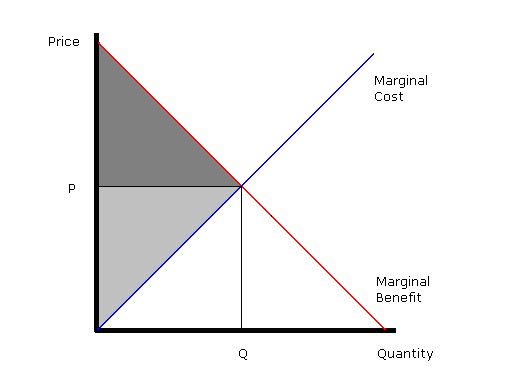Marginal Benefit and the Law of Diminishing Marginal Utility
- Caleb Shin

- Nov 7, 2020
- 2 min read
Updated: Nov 16, 2020
When you see marginal benefit, it means you get that much of a certain satisfaction or utility for each additional unit of the item that you consume. For example, if the marginal benefit for the 5th banana that you buy is 500 calories, that means you get 500 calories more than what you got from the 4th banana. Obviously, one would not get differing amounts of calories when dealing with bananas, but this still proves the point. When viewing marginal benefits, in particular, one must be careful to remember the law of Diminishing Marginal Utility. This law states that the amount of benefit you get from each additional unit decreases. Take food, for example. You will get the maximum satisfaction from the first 5 times you eat a certain food, but each time after that you get more and more sick of it, until it tastes bland and disgusting.
In the graph below, we see the exact definition of marginal utility in action. The marginal utility is the change in utility from one quantity to the next. We can also see the Law of Diminishing Marginal Utility in action. Notice how the marginal utility goes down as the quantity consumed goes up. Even though the total utility may be higher at the very end than the beginning, the marginal utility is in fact less at the end, because we eventually lose utility due to the Law of Diminishing Marginal Utility.

So why is it important that we understand the law of diminishing marginal utility? The law of diminishing marginal benefit is critical in ensuring you get the most "bang for your buck." If each extra dollar you spend from a certain point on an item gives you less and less return, you shouldn't buy it anymore until your marginal benefit recovers. The ideal point at which you should buy an item is when its marginal benefit is the most, and when it is greater than the marginal cost.
In the graph below, it can be seen that the marginal benefit for this item is highest at low quantities. It is ideal for the consumer to buy the quantity of this item which remains above the marginal cost curve. In other, words, the quantities before these two lines intersect are the places in which the user will get the most bang for their buck. Granted, the Law of Diminishing Marginal Utility is still in effect before this point, but the consumer still gets more marginal benefit, so they are making a profit as far as satisfaction is concerned.

It is important to note that the amount of "utility" that the consumer gets is subjective for each person. One person may enjoy an item more than another, so they will get more benefit from buying it.



Excellent question Natasha. Determining the peak of marginal benefit/utility that you get from an item will require a lot of self evaluation. Do you notice how you feel after using an item multiple times? Note this increase or decrease in satisfaction, and you will be able to get a clearer view on your marginal benefits. Using this method, it may be difficult to determine the exact "peak" of marginal benefit, but you will eventually perfect it and be able to operate and manage your finances at peak efficiency, getting the most utility out of every dollar you spend!
How can I tell when a certain object/item is at its peak of marginal benefits?
Interesting topic. Thanks Caleb!